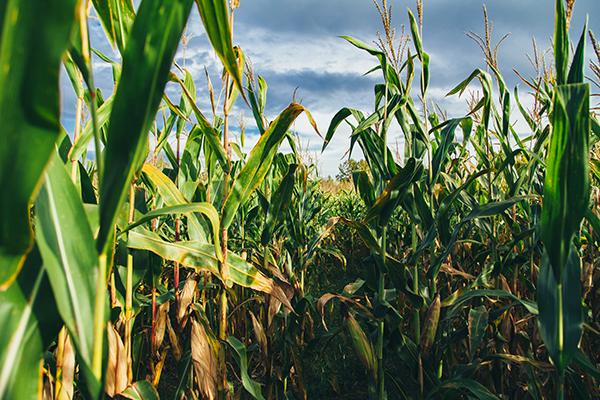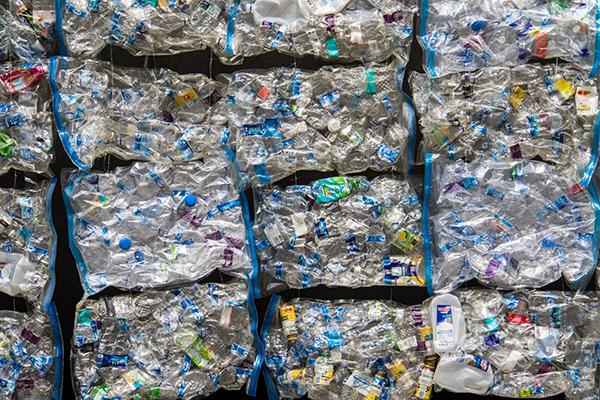In the wake of growing public awareness of the environmental risks of plastic, a lot of seemingly environmentally-friendly alternatives are gaining popularity. With terms such as “bio-based”, “bioplastic”, “biodegradable”, or “compostable” - it’s no surprise that some of us are left confused and unsure, wondering what is the most sustainable choice we can make. We need to shed some light on the “sustainability” of alternative plastics to ensure that we do not try to solve one plastic crisis, by creating another.
Healthcare accounts for approximately half of public spending in the EU - 14% of annual EU GDP in total. With over 15,000 hospitals in the EU, the European healthcare sector can play a significant role in influencing markets and lead the transition to safer, innovative, and more sustainable products and services.

Large quantities of plastic consumer products such as plates, cups, cutlery, or bottles can be found in hospital canteens for staff and patients. Bio-based plastics can also be found in healthcare specific items such as basins or bowls used in surgery and “biodegradable” pharmaceutical packaging is also another option that healthcare procurers might be considering. But do any of these options represent a better alternative to conventional plastic materials?
When looking to reduce plastic waste, we believe procurers should first consider the waste hierarchy:
- Refuse
- Reduce
- Reuse
- Repair
- Recycle
Reduction of plastic should be the priority - but this is not always technically feasible in the healthcare sector where plastic products are used in important procedures. In such cases, when procurers are considering replacing plastic items with alternative, more sustainable materials, we must be careful to not fall into the trap of thinking that the term “bio” automatically means a product is good for the planet.
What is bio-based plastic?
Before we can determine its green potential, we need to understand what bio-based plastic is. Simply put, the term bio-based plastic refers to any plastic that uses biological material (i.e. biomass) instead of fossil fuels as feedstock.
This biomass can come from many sources, typically from purpose-grown crops such as sugarcane or corn, but more sustainable sources such as agricultural by-products and recycled food waste, and even by-products such as feathers can be used. The responsible sourcing of biomass i.e. using by-products over purpose-grown materials, makes a significant difference to products’ environmental footprint.

When making procurement decisions for plastic products, we also need to understand that bio-based plastics are not always exclusively derived from biomass - a large majority of them use a mixture of biomass and fossil fuel material. With no current European regulation for the minimum percentage of biomass required, bio-based plastics could be 80% fossil fuel-based and still legally be labelled “bio-based” by manufacturers.
Even if bio-based plastics use 100% biomass this could lead to increased demand for agricultural land to cultivate purpose-grown crops for biomass. Not only does a switch to bio-based plastics not address the underlying issue of overconsumption, but unsustainable industrial agricultural practices including overuse of pesticides and fertilisers would contribute to deforestation, soil degradation, and destruction of ecosystems, as well as affect food security.
We need to reduce demand for plastic products generally (whether bio-based or traditionally sourced). This would reduce overproduction and represents a cultural shift away from single-use plastics towards a more circular economy in which we stop recklessly extracting Earth’s resources. Our priority first and foremost should be the reduction and prevention of both waste and primary resource use.
Is bio-based plastic biodegradable?
No other properties can be determined from the description “bio-based” – it refers only to what the plastic is made of. Bio-based plastics are not necessarily biodegradable or compostable, and can persist in the environment like traditional fossil fuel-based plastics. In turn, biodegradable or compostable plastics are not necessarily bio-based either, and can be made from fossil fuels.
- Bio-based plastic - made from biological material (i.e. biomass) sometimes in combination with fossil fuels
- Biodegradable plastic - under specific conditions, can break down into carbon dioxide, water, and biomass.
- Compostable plastic – to be truly compostable, plastics must be certified under strict standards for biodegrading in composting facilities
- Bioplastic - confusingly, “bioplastic” can mean either bio-based or biodegradable. Before buying “bioplastic” products, procurers should first get in touch with their supplier to determine what this actually means.
Managing bio-based plastic waste
As with any type of waste, there can be multiple methods of disposal for bio-based plastics. We know that bio-based plastics are not biodegradable by default, but even those labelled as “biodegradable” do not necessarily degrade in the natural environment, but under very specific conditions. Even biodegradable plastics persist in the natural environment for decades (land and sea), harming animals, and releasing microplastics that can end up in our food.
Whilst there is promise in new innovations such as seaweed-based plastics, until reliable scientific research shows that these are indeed biodegradable and harmless to the environment, it makes sense to proceed with caution.

The end-of-life destination for bio-based plastics largely depends on the waste management infrastructure that is in place locally:
- Recycling: Some bio-based plastics are designed to act like traditional plastics e.g. the properties during use and end-of-life are the same for both bio-based and fossil fuel-based polyethylene terephthalate (PET). Bio-based PET can therefore be recycled in regular PET recycling streams if the infrastructure exists. Biodegradable or compostable plastics, however, should not be mixed with traditional plastics recycling streams, as there is a risk of contamination and reduced quality in recycled products.
- Incineration: HCWH does not recommend incineration as a waste management strategy. Rather, we advocate for a circular model in which we reduce overall waste and the carbon footprint of incinerated waste.
- Landfill: This is not a good option for biodegradable or compostable plastics (bio-based or otherwise). As landfills lack oxygen, these types of plastics produce methane (a highly potent greenhouse gas), when they degrade - with a large proportion of it being released into the atmosphere. Plastics in landfill can also release toxic chemicals from their additives into air, soil, and water. PLA, a non-biodegradable bio-based plastic, has been found to leach toxic chemicals, at a comparable level to PVC.
- Composting: Plastics must be certified as compostable and even then they can only degrade in industrial composting facilities. Some facilities, however, do not accept compostable plastics, and those that do often only accept specific products e.g. compostable bags. Dialogue with local waste management facilities is therefore important to ensure composting sites are available.
The healthcare sector is a big purchaser, accounting for approximately half of public spending in Europe. With so much leverage through its procurement decisions healthcare can either lead markets or stall the transition to a circular economy. The sector has the responsibility to consider carefully the procurement choices that it makes, knowing that its decisions can have a great impact on the environment and in turn human health.
Whilst procurers can play a key role in protecting the planet from plastic waste and supply chain emissions, they are not alone: policy-makers must also facilitate the transition towards a circular economy. Plastic manufacturers currently have no obligation to ensure that their products can be disposed of safely, whereas producers of electronic devices in Europe, for example, have responsibility to take care of the waste disposal of their products. Extended producer responsibility legislation should be introduced so that both fossil fuel based and bio-based plastic producers can share the responsibility for large amounts of plastic waste.
Are bio-based plastics the solution to our plastic crisis? Certainly not. To truly address this crisis, we need to re-think our behaviour and reduce our consumption. Whilst there can be a role for bio-based plastics, before rushing to replace every plastic product with other single-use alternatives we must first consider the consequences and ensure that any solutions fully fit within circular economy principles.
When purchasing plastic products and contemplating a shift to bio-based plastics, we urge procurers to first prioritise the reduction of all plastics, and only then consider:
- The source of biomass: recycled bio-products or agricultural by-products are preferable
- The product use: are there any risks of toxic additives leaching from the products and harming human health?
- The product end-of-life destination: how will the bio-based plastic be disposed of?
- Can it be recycled?
- Is a separate waste stream envisioned for the product?
- If a new waste stream is introduced, hospital staff must be informed and instructed on correct waste segregation.

The Insights blog series shares insights from our team, HCWH Europe members, and partners on different sustainable healthcare topics.